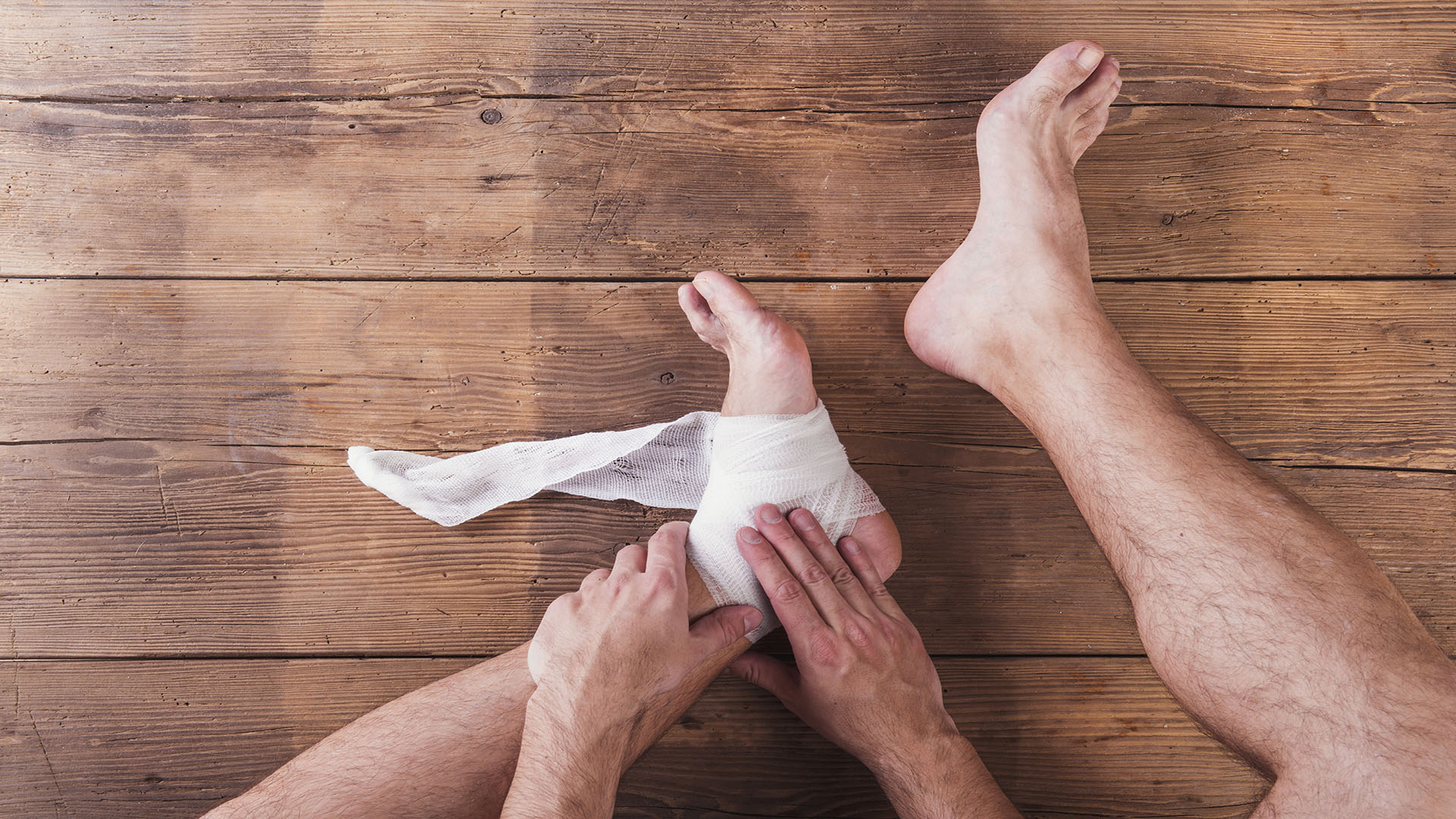Sprains and strains are among the most common ankle injuries, both of which offer discomfort, pain, and the need for crutches or other treatment measures. When the ligaments move too far on an ankle, a sprain injury occurs, and professional attention reduces complications. Treating these conditions is necessary to avoid arthritis, among other issues. Take a look at all the factors you need to consider with a sprained or strained ankle.
How do you know if an ankle injury is serious?
If your ankle hurts with walking or bearing weight, then it’s time to see a doctor. Especially if your ankle is bruised, swollen, or tender to the touch. Only a doctor with x-ray and diagnostic imaging can tell if your ankle is sprained, strained, or fractured. All injuries need professional treatment.
Another approach is to wait and see but only for one day. Ankles can be very sensitive body parts and swell up quickly. On the second day, if the symptoms are the same, then you need to go to a doctor for an evaluation.
Minor ankle sprains should start to feel better in five to seven days. If your ankle gives away easily or feels weak, then go to the doctors’ office. Some people are more inclined to go to the doctor immediately or soon after an injury, which is the best bet to prevent more stress or complications, especially if ice, rest, and over-the-counter pain medications do not help.
How long does an ankle injury take to heal?
Depending on the level of injury, recovery can take up to six months. A mild sprain, or grade 1 sprain, can take three to five weeks. Grade 2 or moderate sprains can take four to 8 weeks. Meanwhile, a grade 3 or severe injury can take three to six months to heal and may require surgical intervention.
An ankle strain stretches a muscle or tendon abnormally and varies in severity. Recovery from a strain may take about three weeks to heal, depending on the level of stain. With both ankle sprains and strains, you need to avoid running or another strenuous exercise for at least eight weeks to avoid further damaging the ankle.
How long will a sprained ankle stay swollen?
Ankle sprains can stay swollen for several days to weeks depending on severity. Swelling may be the first sign of injury as it’s the body’s inflammatory response. When the ankle swells, you need to care for the ankle using the RICE method. First, rest the ankle, then ice the ankle to reduce the swelling, compress the ankle next with a bandage or compression sleeve, then elevate the ankle.
How long should you rest a sprained ankle?
While your ankle is injured, it’s best to rest it as long as possible. Depending on the severity of the injury, you will want to rest for a minimum of two weeks and up to six months. Follow your doctor’s orders to ensure the least long-lasting damage to your ankle. The longer you give the ankle the rest, the more likely you will make a full recovery. In addition, consider getting physiotherapy after injury treatment to help the ankle rehabilitate and recover quicker.
Can a sprained ankle get worse?
Yes, ankle sprains can and will get worse without proper care. First, if not treated properly, the instability from an injury can turn into a chronic issue. Second, excessive movement or walking on an injured ankle can worsen the injury by further stretching or spraining the ligaments, tendons, or muscles. Further injury can lead to cartilage damage, bone damage, and even arthritis.
To prevent hurting your ankle more, it’s best to use crutches, then a boot, and then a wrap to reduce unnecessary weight on the foot. Take your treatment seriously and provide adequate rest and elevation. Seeking treatment to start reusing your ankle is essential too to prevent problems.
What helps a sprained ankle heal faster?
The first and best thing you can do to help your ankle heal faster is to avoid putting weight on the foot. Sadly, this means you may need crutches to get around. Next, a brace or orthopedic boot can help support the joint and keep it from moving, which can help heal faster. Finally, receiving therapy can help you recover faster by finding the right movements to help and not hurt your ankle.
What does a torn ligament in an ankle feel like?
A torn ligament makes it almost impossible to walk and comes with severe pain along with a looseness of the joint. The foot will swell and bruise. You may experience discoloration too. Most of the pain and tenderness concentrates on the top, bottom, or side of the foot by the arch. Walking and physical activity cause the pain to intensify, and it’s difficult to put any weight on the foot.
What helps ligaments heal faster?
The most important action you can take to heal a ligament faster is to eat healthy and increase water intake. Next, you need to promote good blood flow by using ice, heat, proper movement, and visiting a physiotherapist. Learn to do stretches and mild exercises that can help to build stretch, but talk to a professional first to avoid re-injuring the ligament.
How should you sleep with a sprained ankle?
Back sleepers are already in the best position to relieve pressure from the ankle, but side sleepers will need to place their foot on a pillow to keep the other foot away. Stomach sleepers may need to change their position to prevent putting pressure on their ankle. If you cannot sleep on a bed comfortably without sleeping on your stomach, consider sleeping in a reclining chair until you heal.
When sleeping with a sprained ankle, you need to stock up on a couple of extra pillows. The pillows help to elevate the foot and improve blood flow. Also, they help to separate the feet and help to drain fluids and swelling. The goal is to elevate your injured foot over your heart if possible. You may need more pillows moving down your leg for comfort.
Should I wrap a sprained ankle at night?
Use braces, compression, or supports should be for daytime use only. However, you can use an ankle wrap at night for extra support. Make sure the wrap stays loose enough for some movement and circulation. Do not wrap the foot as tight as you would in daytime use for more movement. Ideally, as your foot starts to heal, you will be able to sleep without the support of a wrap on your foot.
How do you know when a sprained ankle is healed?
When you have full and pain-free motion of your ankle, then you are almost done healing. Moreover, when you can hop on one leg or balance on the leg without pain, then you are fully recovered. The final steps are the ability to confidently walk up or downstairs or run on your ankle comfortably. Even once you are fully recovered, be gentle on your body. Consider wearing an ankle wrap a little longer for extra stability. Your physiotherapist and doctor will be able to tell you when you are fully healed as well.
Is it okay to walk on a sprained ankle?
No, bearing weight on a sprained ankle can cause more injury to the foot. Instead of speeding recovery, you can delay ankle joint healing.
What happens if a sprain is left untreated?
An untreated ankle can cause degenerative changes in the ankle joint, arthritis, and chronic inflammation. As you need your ankle to walk, soon every activity from walking, exercising, running, and more will become a difficult and painful process that will continue to worsen. While proper recovery can take a significant amount of time, not treating the ankle means it may not fully recover, and you could have long-term issues.
Should I see a doctor for a sprained ankle?
Always see a doctor for a sprained ankle, as you may need x-rays to make sure it’s not fractured or broken. Only examination and x-rays can tell you what is really going on inside. When it comes to the ankle, an injury can be to a muscle, tendon, ligament, or bone. Do not take a chance with your health and ability to walk.
Why choose Portland Wellness Care?
Portland Wellness Care works with a multitude of insurance companies to serve more patients. We also use a variety of integrated medical resources by combining both western and eastern medical healthcare, to optimize your recovery.
We offer same-day and walk-in appointments for sprains for immediate relief with the best doctors. Get a dedicated treatment plan for injuries to reduce and manage pain. Our in-house physical medicine specialist can help to diagnose the injury and find the best approach to recovery along with diagnostic imaging and x-rays.
Conclusion
Ankle sprains and strains are common injuries that require medical attention. While most of the treatments are at home, you need a specialized plan for a full recovery and to prevent further ankle injury. Find the care you need and get back to your normal life in comfort and health.














